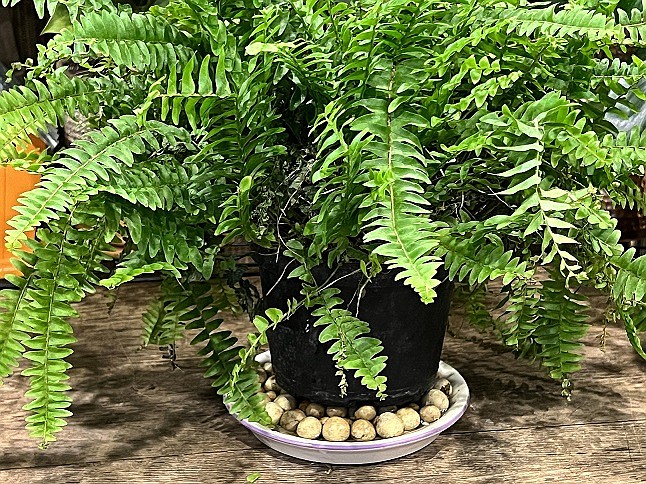Caring for Plants Overwintering Indoors
December 16, 2023 at 5:56 p.m.
Gardeners are notorious for pushing the limits of their growing zones. Tropical plants, succulents, and other plants that are not hardy to the winter climate often end up indoors for the winter. It usually starts with one or two plants that you just can’t part with or are concerned you won’t be able to purchase next year. Since you are taking a couple of plants in for the winter, why not add a few more?
Now that the plants have been indoors for several weeks or months you are faced with keeping them alive and the leaf litter on the floor to a minimum. As the plants adjust and acclimate to their new environment, some leaves may have turned yellow or brown and dropped off the plant. This is due to the lower light and humidity indoors.
New leaves better adapted to the lower light indoors should begin appearing. If the plants do not appear to be acclimating to the indoors, try increasing the amount of light they receive. Move them in front of a sunnier window or under artificial lights. A combination of natural and artificial lights works well.
Select a location free of drafts of hot and cold air. Avoid placing plants above heat vents or near drafty windows and doors. Succulents prefer cool but draft-free locations over winter.
Next, help your plants deal with the dry air indoors. Group plants together for an attractive display and to increase the humidity around each plant. As one plant loses moisture from its leaves and transpires, the others benefit from this added moisture.
Reduce maintenance and increase the humidity by setting plants on a layer of gravel, marbles, or a similar material set in trays or saucers. The pebbles elevate the pots above any water that collects in the saucer, helping reduce the risk of waterlogged soil that can lead to root rot. This technique allows you to water thoroughly while eliminating the need to pour off the excess water. As the excess water evaporates, it increases the humidity around the plants.
Adjust your watering schedule to compensate for the reduced light and changes in room temperature and humidity. Check the soil moisture before watering. In general, water thoroughly when the top inch of soil is dry. For succulents, allow the top few inches of soil to dry and water just often enough to prevent the plants from shriveling.
Most indoor plants do not need to be fertilized in winter. Only those that are actively growing will need additional nutrients. Don’t be fooled by leggy growth and paler leaves on overwintering plants. Lower light is more likely the culprit than a lack of nutrients.
Regularly check the plants for insects and diseases. Examine the upper and lower leaf surfaces and along the stems. Then do a bit of research to properly identify the pest and find the best control options. If you opt to use a pesticide, read and follow all label directions for safe and effective control.
Prune as needed in spring to encourage fuller more compact growth. Begin fertilizing with a dilute solution of any flowering houseplant fertilizer as days lengthen, sunlight increases, and your plants show signs of improved growth.
As you move the plants into the garden next season, decide if it was worth the effort or better to purchase new plants. But as a gardener, you will likely repeat the process next year as it is part of the fun of gardening.
Melinda Myers has written more than 20 gardening books, including the recently released Midwest Gardener’s Handbook, 2nd Edition and Small Space Gardening. She hosts The Great Courses “How to Grow Anything” instant video and DVD series and the nationally syndicated Melinda’s Garden Moment TV & radio program. Myers is a columnist and contributing editor for Birds & Blooms magazine. Myers’ website is www.MelindaMyers.com.





